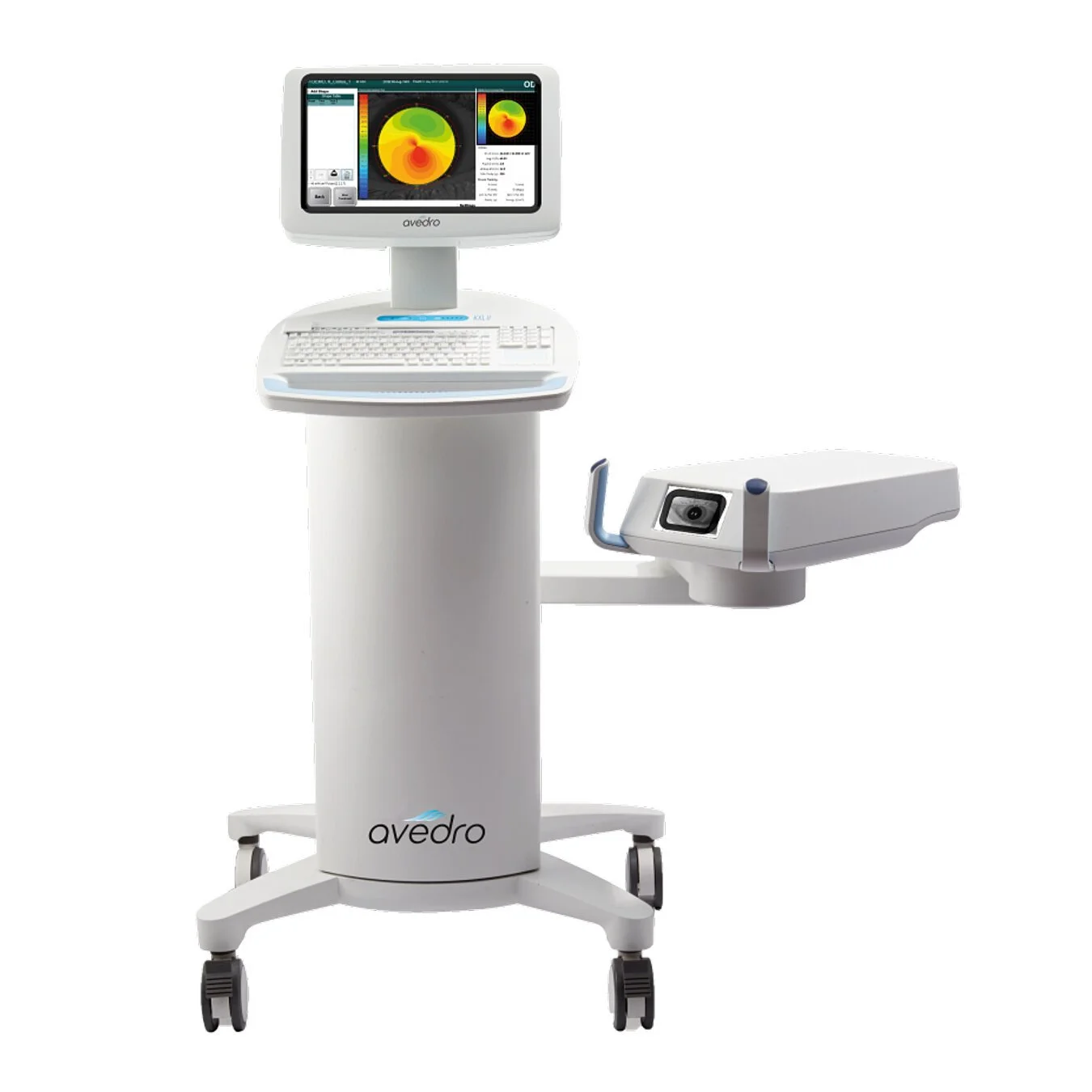Keratoconus
If your health fund covers cross linking (Medicare item number 42652) then you can have your procedure done while you are lightly sedated or sleeping at the South Brisbane Day Hospital with NO GAP for the anaesthetist.
The cornea is the clear window at the front of the eye. It normally has a nice regular shape like a soccer ball. Keratoconus is a degenerative disease of the cornea where it slowly changes shape from being round like a soccer ball to being shaped more like a cone. This irregular shape causes astigmatism which distorts and blurs your vision. Normally astigmatism can be treated with glasses, however, in keratoconus the astigmatism is too irregular for glasses to fix so special keratoconus contact lenses are required. Keratoconus affects up to 1 in 86 people depending on the racial group. It generally appears in the late teens to early twenties and tends to stabilise by age 40.
Traditionally 1 in 4 people with keratoconus needed a corneal transplant. Whilst this is an effective treatment, corneal transplants can reject and fail. Thankfully with modern treatment, newly diagnosed patients will only very rarely need a corneal transplant as we can now halt the progression of keratoconus and even remove the corneal irregularities with laser surgery.
Treatment options for Keratoconus
1. STOP RUBBING YOUR EYES
Many patients with keratoconus have a long history of rubbing their eyes due to chronic allergy. This rubbing can severely worsen keratoconus. It is imperative that you stop rubbing your eyes if you have keratoconus. Topical anti-histamine drops such as Patanol or Zaditen may be helpful in relieving the chronic irritation and itch.
2. CONTACT LENSES
Most patients with keratoconus require specially fitted contact lenses to have good vision. These contact lenses should provide excellent vision but do not treat the actual disease. Generally, specially trained contact lens optometrists are required to fit theses lenses. These optometrists have the specialised equipment and expertise to fit complex contact lenses for keratoconus.
3. COLLAGEN CROSS-LINKING
Patients with worsening keratoconus can have their progression halted with this procedure. Collagen cross linking works by using a reaction between UV light and a riboflavin to create strong, permanent bonds between the collagen layers of the cornea. This substantially strengthens the cornea and stops the progression of the disease.
The procedure can be performed as an outpatient if you do not have private health insurance. This means you can maximise your medicare rebates with the medicare safety net. The MAXIMUM GAP you will pay for cross linking is $500 per eye if you have health insurance.
Dr Cronin uses the best collagen cross linking machine available. The revolutionary eye tracking technology in the Mosaic KXL2 topography guided collagen cross linking machine means that more energy is delivered to the steeper parts of your cornea. This personalised and customised treatment is individual for each person. It delivers better vision and better outcomes to more patients. Dr Cronin and his colleagues at QEI are the only surgeons in Australia with this amazing cross linking technology.
See a video of the procedure here.
4. CORNEAL RESURFACING AND COLLAGEN CROSS-LINKING (“ATHEN’S PROTOCOL”)
This involves using an excimer laser to “resurface” the cornea and remove the irregular astigmatism that causes the reduced vision in keratoconus. This is called a phototherapeutic keratectomy (PTK) and it leaves the cornea with a nice regular shape. Immediately after the laser resurfacing has occurred, the cornea undergoes collagen cross-linking. See a video of the procedure here.
5. CORNEAL ALLOGENIC INTRASTROMAL RING SEGMENTS (“CAIRS”)
In this procedure, a femtosecond laser is used to create a ring-shaped tunnel in your cornea. A small, similar shaped ring of donor corneal tissue is threaded into the tunnel in your cornea. This ring of corneal tissue improves the strength, rigidity and overall shape of your cornea. CAIRS is often combined with collagen cross linking to enhance the strengthening effect. CAIRS has many of the advantages of both Kerarings and other types of corneal transplants without many of the downsides. QEI was the first clinic in Australia to offer CAIRS as a treatment and Dr Cronin regularly hosts surgeons from around the world to teach this technique. He even runs a website that is used by surgeons globally to plan their CAIRS procedures - www.cairsplan.com. Watch a video of the CAIRS procedure here.
6. BOWMAN’S MEMBRANE TRANSPLANTATION
Bowman’s layer is a tough but clear layer in the cornea. In a normal cornea it is approximately 10 microns thick but it is often weakened and degraded in keratoconus. In a Bowman’s layer transplant this 10 micron layer is delicately peeled from a donor cornea. A femtosecond laser is used to create a pocket in your cornea. The donor Bowman’s layer is then inserted into this pocket. This strengthens and stiffens your cornea.
7. PLASTIC CORNEAL SEGMENTS (KERARINGS)
These small implants are inserted into your cornea to pull the keratoconic cornea back into a better shape much like “CAIRS” as discussed above. CAIRS has completely replaced Kerarings as a procedure for keratoconus as it is safer and more reliable.
8. CORNEAL TRANSPLANTATION
With all of the other treatments available this is a last resort treatment for NEWLY diagnosed patients but is still a very common procedure for patients who already have severe keratoconus. New partial thickness corneal grafting techniques such as Deep Anterior Lamellar Keratoplasty (“DALK”) have much lower rejection rates than traditional full thickness or Penetrating Keratoplasty procedures.



